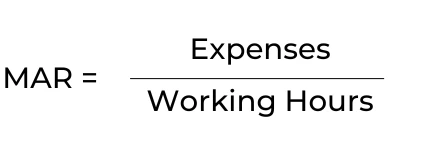
Virtual Assistant Salary in 2025: How Much Can You Earn as VA?

Oni Lestari
Virtual assistant, copywriter, SEO-expert
Since the Covid-19 pandemic, remote work opportunities have significantly increased, allowing many to work without ever stepping into an office. One popular option is becoming a virtual assistant. This role offers the flexibility to work from home—or anywhere else you choose—while setting your own schedule.
But a common question remains: how much can you earn as a virtual assistant in 2025? Is it realistic to charge $10 per hour? What if some clients find that rate too high? Conversely, what are the risks of setting your rate too low?
To help clarify these concerns, SGB VA has put together a detailed guide on virtual assistant salaries. Keep reading to learn more!
Table of Contents:
Who is the Virtual Assistant?
The definition of virtual assistants is partners who help businesses with administration, management, or creative tasks from the online space. This role is not new, it started in 1996 when Anastasia Stacy Brice pioneered this job as a full-time secretary working from home for her international clients.
Recently, the COVID-19 pandemic significantly impacted the virtual assistant industry, as it contributed to remote work and de-urbanization trends. This made virtual assistants more popular and increased demand.
As businesses adapt to the demands of the digital age, they are cultivating new needs, especially in technology and those skilled in it.
Today, virtual assistants play a key role in increasing brand visibility through digital marketing, providing technical support, handling managerial tasks such as project management, and much more. The various duties and responsibilities of a virtual assistant are also tailored to the client’s needs. So, the services of a virtual assistant for one client may be different from another client.
Virtual assistant salary services vary based on many factors, such as:
- Experience and reputation
- Specialized skills
- Project type and complexity
- Software and equipment
- Market demand
- Geographical location
Fees for services like digital marketing and other services that require additional skills and knowledge are usually higher than administrative support or personal assistance services. Basic administrative tasks may range from $5 to $10 per hour, while specialized services like digital marketing or project management can command higher rates, often ranging from $10 to $25 per hour in the Southeast Asia region.

Calculating Potential Earnings for a Beginner VA
With businesses relying more on virtual help for remote work, being a virtual assistant is a smart choice. Here’s the exciting part; recent stats say the virtual assistant industry grew by 41% in 2020, and it’s still going up in line with the emergence of many online businesses (source: truelist.co).
If you’re considering starting out, you might wonder about how much you can earn as a VA. Just like any other job, the fees for virtual assistants also vary based on many factors, such as experience and skillset.
Virtual assistants salary are typically charged based on hourly rates, project-based rates, or even monthly packages. The chosen structure often depends on the nature of the tasks and the preferences of both the virtual assistant and the client.
How do you figure out your niche? This question can be one of the most challenging aspects for beginners. We’re going to explain what a niche is and how to decide on your niche.
But before we delve deeper, let’s make it clear: you don’t have to lock yourself into a niche. The best part of being a virtual assistant, or a business owner of any kind, is the flexibility to pivot your business as needed. If you choose a specific niche now, you can change it anytime.
To figure it out, you can start by answering these two questions. One, “what skills do I already have that I can use to serve clients?” and two, “what type of tasks do I want to be doing as a virtual assistant?”
Hourly Rates
As a beginner, setting a competitive yet reasonable hourly rate is crucial. From our survey, beginner virtual assistant hourly rate is $10 per hour or $300 per month from one client. If we calculate, you can get that amount with 1-2 hours of work a day. Because of that, you still have plenty of time for other clients, or to upgrade your skills so you can increase your rates.
Project-Based Rates
For specific projects, virtual assistants might charge a flat fee. Project rates vary widely based on the complexity and duration of the task. For example, a landing page project starts with 24 hours of work or a week (source: onix-systems.com). If we calculate with hourly rates of $10 per hour, you could get $240 for a landing page project. A well-calculated project rate ensures fair compensation for the virtual assistant’s time and effort.
Monthly Packages
Offering monthly retainer packages is another approach. These packages provide a set number of hours for a fixed monthly fee, ensuring a consistent income for the virtual assistant.
Let’s take an example of a monthly package that includes social media services, creating 4 posts per week and a total of 16 posts for the month. If it requires 30 hours a month and the hourly rate is $10 per hour, then $300 will be invoiced to a client every month. Again, it only takes 1-2 hours of work a day for one client, and you still have plenty of time for other clients, for family, or to upgrade yourself.
Imagine you’re helping three clients. Two of them pay you monthly for managing their social media for 30 hours, and the third one pays for a project, like creating a landing page, which takes 24 hours. In total, you could earn $840 each month by working 4-5 hours a day.
Set Up Minimum Acceptable Rate (MAR)
Minimum Acceptable Rate (MAR) is a baseline that ensures services are not undervalued. It represents the minimum amount that a virtual assistant is willing to accept for an hour of skilled assistance, considering factors such as expenses, taxes, and desired income. There are steps on how to determine MAR:
Calculate Monthly Expenses
List all monthly expenditures, covering essentials such as rent, groceries, and insurance. Also, business-related costs like internet, software subscriptions, office equipment, marketing expenses, certification, and taxes. Include both fixed and variable expenses to get a comprehensive view of financial needs.
Calculating monthly expenses provides a clear picture of the minimum income required to cover basic living costs and sustain business. It forms the foundation for establishing a realistic MAR.
Decide Working Hours
Identify the hours that can realistically be dedicated to clients. Consider factors such as the desired work-life balance, non-client-related tasks (e.g., marketing, administrative work), and any potential downtime.
Let’s calculate the working hours. Here’s an example:
| Type of Days | Number of Days |
|---|---|
|
Calendar Days
|
365
|
|
Weekends
|
-104
|
|
National Public Holidays
|
-10
|
|
Vacation
|
-25
|
|
Sickness
|
-5
|
|
Total Working Days
|
221
|
From that table, we have 221 working days. And if we only can spend 5 hours of work each day. We have 1,105 working hours per year. Establishing working hours helps in defining the scope of availability for clients’ projects. It allows the calculation of the total number of billable hours that can be offered, influencing the calculation of MAR on an hourly basis.
Minimum Acceptable Rate


Conduct Market Analysis
Ready to Start Earning as a VA?
Virtual assistants are becoming a crucial part of today’s remote work world, helping businesses with all kinds of tasks. If you’re just starting out, it’s important to set rates that are competitive but also fair, keeping in mind your experience and the type of projects you’re handling. For instance, as a beginner, you might charge around $10 an hour or aim to make about $300 a month from one client.
To make sure you’re getting paid fairly, it’s a good idea to figure out your Minimum Acceptable Rate (MAR)—this is the lowest amount you’re willing to accept for your work, based on your expenses and the income you want. By understanding what the market looks like and showing off your skills, you can feel confident when setting your rates.
If you’re still confused about how to charge your clients, join our free webinar with SGBVA mentor Tania Gromenko as the speaker. She will share many secrets to succeeding in the VA business, including how much you can charge your clients. Click the button below to join the webinar!
Get Actionable Tips to Charge Your Clients
With our mentor, Tania Gromenko, you will be guided in starting a career as a virtual assistant, including how to set your rates. Click the button and register right now!








